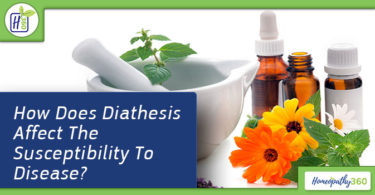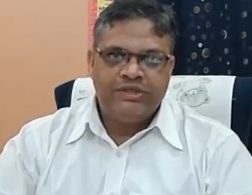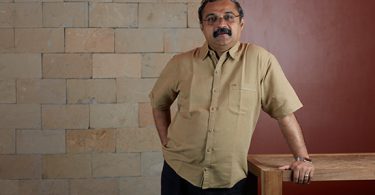EARLY PHYLOSOPHERS : The basic principle of homoeopathy as a system of medicine was recognized in ancient Greece by the physician Hippocrates (460-350 B.C )who is generally regarded as the father of medicine .He wrote “by similar things a disease is produced and through the application of the like , it is cured “
Hippocrates in an oblique manner , recognized the natural ability of the body to cure itself by writing that medical treatment is aimed at “Removed the impediments to people getting better “. He also wrote of the symptoms of a disease as the expression of nature’s healing powers .
Second only to Hippocrates among the founders of medicine was another Greek physician , Galon (130-200 A.D )skilled in anatomy and physiology , he write of natural cure by the likes , Galon was recognized as the authority in medicine for more than 1000 years , but during this time no significant progress was made . During the 15th and 16th centuries when medicine was developing slowly as a scientific study , the Swiss physician and leading medical reformer , Dr. Theophastus Von Bombast (1493-1541 ), who adopted the pseudonym paracelsus rejected the principle of opposite acting remedies and stated that same must be cured by same . He also believed that every diseased organ had its corresponding remedy in nature , like his predecessors however his reasoning was largely intutie and lacked a precise scientific approach.
HOMOEOPATHIC PRINCIPLE
The first precise enunciation of the fundamental homoeopathic principle was given in early 17th century by a Danish physician , Dr. George Stahl taking up the assumptions of paracelsus .
He wrote : To treat with opposite acting remedies is the reverse of what it ought to be . I am convinced that disease will yield to and be cured by remedies that produce similar affections . Again his views wre ignored by the medical profession which relied largely on draconian , purgative methods of treatment . which consisted of venesection or blood letting , augmented by stomach –rending emetics, laxatives and massive doses of often poisonous medicine . many of which caused serious side effects .
MODERN HOMOEOPATHY
The basic concept of treating like with likes . That is using remedies which are capable of producing in a healthy person similar symptoms to those experienced
In the patient. remained undeveloped . Although it had been known for some 2000 years , it was never subjected to systematic, scientific study nor used to any extent in practice it remained simply the germ of an idea . The founder of the modern system of homoeopathic treatment was a brilliant German physician , Dr. Samuel Hahnemann, born on the 10th of April 1755 in the town of Meissen in Saxony (Eastern Germany )the son of Christian and Johanna Hahnemann , he was named Christian Fredrich Samuel . He had a disciplined boyhood guided by his father , who expected high moral standards . A brilliant student at the high school in Meisson. He entered the university of Leipzig-in 1775 to study medicine. Soon disenchanted with contemporary medicine , he turned to the study of chemistry and after two years he left the university .
After staying in Vienna and Transylvania , where he furthered his study of languages (he now spoke German, Latin, Greek, English, French and Spanish fluently ). He decided to complete his medical studies at the university of Erlangen in Bavaria. Erlangen undoubtedly attracted him since it was one of the reformed , politically , spiritually and intellectually in contrast to the old narrow orthodox approach of the older universities
The awakening of this critical spirit matched Samuel Hahnemann’s mood and character . He was awarded the degree of doctor of medicine on 10th august 1779. He began his career as a practicing physician in Hettstedt , a small copper mining town at the foot of the Hartz mountains . the squalid living conditions of the miners and their families and his inability to provide effective and humane . medical treatment to these poor people , fuelled his frustration and despair . medical practice at that time was based on purging the disease from the body , blood letting or venesection was nothing short of a mania . The medical text books urged repeated copious venesections until the patient faints and even such conditions as whooping cough or pregnancy fell victim to the knife .
Alternatively , dozens of blood sucking leeches ,purgation followed including stomach rending emetics violent laxatives and enemas ,finally if the patient has not succumbed from the treatment ,massive doses of poisonous remedies were administered . Small wonder that Hahnemann believed that more people died of their treatment rather than their disease .
HOMOEOPATHIC PRINCIPLE
It was during this difficult time that Hahnemann performed an epoch-making experiment that was to lay the foundation for his new system of medicine –Homoeopathy . It arose when he was translating a book from English into German written by a distinguished Scottish physician ,Dr.William Cullen . “A treatise on materia medica “. It was an account of a drug cinchona or Peruvian bark (cortex peruvianus )which had been used for the treatment of malaria , first in South America and subsequently in Europe , which prompted the experiment ,for several days he took large doses of the drug and carefully noted the symptoms . His feet and finger tips became cold ,he became drowsy ,his heart began to palpitate . His pulse quickened and he experienced trembling in all his limbs , a thirst and redness of cheeks . The symptoms lasted only for a few hours and recurred each time he repeated the dose . Thus the drug cinchona , when taken by a healthy person induced symptoms similar to malaria . The very disease the drug was used to cure .Hahnemann noted in the book “cinchona bark “ which is used as a remedy for intermittent fever in healthy people . He had established the basic precept of homoeopathy , fore shadowed by Hippocrates, Galen Stahl and paracelsus . Apparently he did not appreciate the full significance of his discovery at the time , as in further anntations of Cullen’s book , he reverted to his attacks on medical practice –blood letting , fever remedies weakening diet ever lasting aperients and clysters (enemas) and the like .In spite of further public attacks on the medical profession principally in a news paper “Der Anzeiger “published in Gotha , Hahnemann’s contribution to science was recognized in 1791 by his election to the Leipzig Economical society and the academy of science of meinz but the opposition against Hahnemann by the German physicians for his critical views was hardening .
PREPARATION OF HOMOEOPATHIC MEDICINES
HOMOEOPAHIC PHARMACY , SOURCES OF HOMOEOPATHIC MEDICINES
By law of similar every substance on earth which is capable of inducing diseases symptoms in a healthy person , is potentially a homoeopathic medicine .
There are now more than 3000 known medicines (remedies) available to the homoeopath , almost all of which are derived from natural sources .
1.Plants : including flowering plants , shrubs vegetables bulbs or corns and the bark of trees.
2.Animals : derived from the whole animal , fish or insect or from specific organs glands or tissue of healthy specimens .
3.Minerals :including naturally occurring mineral ores and chemical elements metallic non metallic and metalloids (chemically part metal and part non-metal)
4.Biological sources : derived from healthy or diseased tissue of human or animal organisms . There are more than 5,00,000 known plant species on earth, yet less than 10% have been tested for their therapeutic properties . Further more , it is reported that with the destruction of the rain forests , pollution etc. at least ten plant species become extinct every day and their potential for the relief of human suffering is lost for ever .
Plant sources ; the plant sources form the largest group accounting for more than 60 % of all homoeopathic medicines although the whole plant including the roots is sometimes used in the preparation of homoeopathic medicines , more usually selected parts are used . flowers (rarely) , stem, buds, seeds, fruits, corns, barks .
DECLINE OF HOMOEOPATHY
Miracle drugs : The so called miracle drug revolution began in 1909 with the discovery by Paul Ehrlich of the first specific anti-bacterial drug “salvarsan” a synthetic organic arsenic compound . the race was on . In Paris the activity of sulfanilamide ,a product of the rising German dye industry was shown to be active A year later in 1936 , the British discoveries of the therapeutic activity of sulphapyridine and sulphonamide drugs . The introduction of amphetamines and barbiturates soon followed . The first antibiotic pencillin was discovered by sir Alexander Fleming in 1928 and its therapeutic use was developed by H.W.Florey and EB chain at Oxford in 1938 . In the Euphoria at this time it was thought that it was only a matter of time before every disease suffered by mankind for centuries past would be conquered ,dazzled by the apparent success of these wonder drugs . the physicians turned from the less spectacular homoeopathy and its decline was accelerated . unfortunately another factor contributed to the decline of homoeopathy a serious rift had developed in the profession between those physicians who followed the Dr.Richard Hughes in England and the adherents of Drs.James Kent H.C Allen in America . the English school rejected the psora theory and other metaphysical ides of Dr. Hahnemann (chronic diseases )in his later years and laid emphasis on the modern scientific basis of homoeopathy . Hughes believed that the pathological symptoms and their modalities were more important than the mental symptoms and he only prescribed low potencies . high potencies as prescribed by Dr. Kent were dismissed by him as airy nothings .
Homoeopathy is a natural medicine which is safe with no side effects , non-addictive
It does not require animal experiments (only provings on healthy people ),it is relatively inexpensive and treats the whole person .
To day ,the organon is still recognized as the authoritative statement on the practice of homoeopathy world wide . It has been published in six editions and translated into ten languages . The basic principle of homoeopathy Dr. Hahnemann expanded to “SIMILIA SIMILIBUS CURENTUR “-let likes be treated with likes and this law of similars , as it is known is immutable Dr.Hahnemann gave his own definition of cure in the organon .
The physician high and only mission is to restore the sick to health to cure as it is termed . the highest ideal of cure is the speedy , gentle and enduring restoration of health or the removal and annihilation of disease in its entirety by the quickest , most trust worthy and least harmful way according to principles that can be readily understood . Every medicine , which among the symptoms it can cause in a healthy body , reproduces those most present in a given disease is capable of curing the disease in the swiftest , most thorough and most enduring fashion .
The name Homoeopathy was coined by Samuel Hahnemann from two Greek words meaning similar suffering or “like cures like”. This is a natural principle that has been known for thousands of years , but it was not until the end of the 18th century that Hahnemann (1755-1843), a brilliant German doctor and chemist started on the course of study and experimentation that led to the development of modern homoeopathy . Appalled by the savage medical practices of the day . he formulated a system of healing that was only extremely safe , but scientifically based , his philosophy of disease and its cure through natural processes has changed very little from that day to this . the principle of like curing like or “the law of similars ”as it is some times called , decrees that if a substance can cause harm to a healthy person
In large doses , it also has the potential to cure the same problem in tiny doses by stimulating the body’s own natural energy enabling it to heal itself . The law is best illustrated by example ,in the 19th century it was a custom among German women to take the herb valarian regularly as a stimulant . The practice was much abused and caused over taxing of the nervous system . Yet given in minute doses valerian relaxes the nervous system and calming the mind is one of homoeopathy’s main remedies for insomnia.
The doses used in homoeopathy are so small that they can not be acting , directly on the physical body Hahnemann considered that they acted dynamically , that the energy of the remedy stimulated the natural healing energy of the body , if it was in a state of disharmony in order to its former healthy state . there are many chemical compounds that are used for homoeopathic remedies . Homoeopathic remedies have been used for some 200 years to treat a wide variety of illnesses safely and effectively The word homoeopathy means “like suffering” It describes the basic principle of homoeopathic treatment that the symptoms that a person experiences can be cured by a substance that would cause the same symptoms if given to a healthy person , this principle was recognized by Hippocrates 2400 years ago , but it was not used in a systematic way until Dr,.Samuel Hahnemann (1755-1843) grew tired of the brutal medical practices of his day and began to experiment with other forms of treatment. Using herbs and later substances including the medicines of the day such as arsenic and mercury . Hahnemann gathered a group of healthy people who took the substance he was investigating and then reported their symptoms . these were called “provings “and were recorded . They became the basis of the prescriptions Hahnemann later gave to ill people with the same symptoms . taking medicines that caused the same symptoms that a patient was already experiencing some times caused an aggravation of the symptoms . To overcome this Hahnemann devised a method of preparing the medicine by systematically diluting the original medicine or mother tincture and shaking it vigorously between each dilution . To his surprise , this method enhanced the action of the medicine . He called the method “potentisation “and the resulting medicines “potencies” . thus the highest potencies contain the weakest solutions Hahnemann method is still used today . the mother tincture is diluted on one of two scales :either one part in ten , one part in 100 the number of dilutions that a medicine has undergone is recorded on each bottle of medicine . Hahnemann method is still used today .The mother tincture is diluted on one of two scales ,either one part in ten or one part in 100. The number of dilutions
That a medicine has under gone is recorded on each bottle of medicine by a number , which is usually printed just after the name of the medicine .The dilution scale is indicated by a letter 6x, 30, 200 etc. means that each dilution is one part in 10 ,and C denotes dilutions of one part in 100, for ex-a medicine which has 6c on it means that the mother tincture has been diluted by one part in a 100, six times , a 1000c dilution is usually denoted as 1M , Giving such small doses has always been controversial because the original substance must eventually disappear altogether . Modern chemistry tells us that this occurs at about the 12c dilution , so how can the higher potencies be effective . It is thought the medicine leaves some sort of message in the water during the vigorous shaking between dilutions and that this message some how resonates with the body to promote healing .
Vital force : Hahnemann believed that the body contains an innate power to heal itself , he called this the vital force he believed that when a person is ill this force becomes disordered and that homoeopathic medicines are able to restore it in a unique way . The choice of medicines depends on the symptoms that are present and is called the symptom medicine . The term local medicine is some times also used in more long standing illnesses , the vital force may put up a good resistance to the progress of the disease but over a period of time the illness becomes more severe . Symptom medicine may bring some relief , but they rarely cure this type of illness and a constitutional medicine may be needed . such a prescription is based on the whole personality and appearance of the patient.





